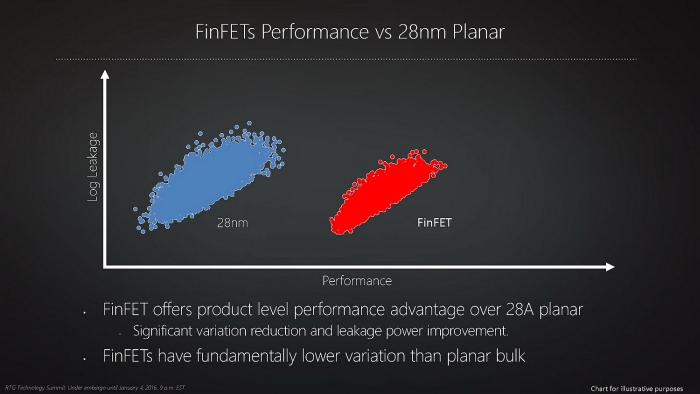
Polaris in the night sky (via Flickr)
During a recent interview with ArsTechnica, AMD's Roy Taylor, Corporate Vice President of Alliances, confirmed that Polaris would specifically target mainstream users who are interested in creating VR-ready systems. The timing, and more importantly, careful execution of this decision should give the company a strategic entrance into the growing desktop VR market playing field, especially while it can still grab onto the roots going forward in 2H 2016.
"The reason Polaris is a big deal, is because I believe we will be able to grow that TAM [total addressable market] significantly," said Taylor. "I don't think Nvidia is going to do anything to increase the TAM, because according to everything we've seen around Pascal, it's a high-end part. I don't know what the price is gonna be, but let's say it's as low as £500/$600 and as high as £800/$1000. That price range is not going to expand the TAM for VR. We're going on the record right now to say Polaris will expand the TAM. Full stop."
As some are familiar with, Taylor worked for Nvidia for over a decade and is now a strategic-yet honestly up-front corporate head of the company's . In December 2014, he was interviewed by TweakTown regarding his thoughts on the green team's newly-launched Maxwell GPUs at the time, and how AMD's midrange GPU price drops affected the market going into the first half of 2015.
“The reaction has been wonderful and consumers are definitely seeing the value in having 512-bit but parts at the top end so competitively priced,” Taylor said in 2014 of the Radeon R9 280 and R9 285 price drops. “We are active on social media and engage openly with users who have praised the new prices.”
So far, early rumors have shown that Polaris 10-based midrange GPUs are comparing favorably with higher-end Nvidia Geforce GTX 980 Ti performance, and that we can expect 30 to 50 percent more performance over the R9 390X (released June 2015) thanks to design improvements with the 14-nanometer FinFET process, along with the possible use of GDDR5X memory.
At a Geforce GTX 980 Ti level of performance for midrange GPUs, there will undoubtedly be a noticeable shift in price-to-performance ratios across both notebook and desktop business revenue margins, particularly if AMD intends to launch Polaris somewhere between $299 (Radeon R9 280X ($299 in October 2013) or slightly above Radeon R9 390 ($329 in June 2015), yet below Radeon R9 290 ($399 in November 2013).
During the recent ArsTechnica interview last month, Taylor goes on to say that the graphics divisions of AMD and Nvidia are focused on two completely different addressable markets right now - mainly, AMD is addresssing affordable midrange gaming (all three next-gen consoles) and virtual reality, while Nvidia is leading in high-end Geforce, a few select Android devices and peripherals, and high-performance GPGPU computing using deep learning in enterprises and automotives.
AMD FinFET vs planar performance chart for illustrative purposes
Earlier in January, a VentureBeat interview with AMD graphics chief Raja Koduri seemed to suggest that one of its upcoming Polaris 10 cards was a larger, high-performance variant designed to recover high-end GPU market share from Nvidia. However, it now appears he may have been referring to bringing high-performance down to midrange price points. It is important to note that Koduri only offered to compare Polaris performance with a midrange Nvidia Geforce GTX 950, hinting at the company's strategy of releasing some “high-end”-capable midrange cards this year.
"If you look at the total install base of a Radeon 290, or a GTX 970, or above, it's 7.5 million units. But the issue is that if a publisher wants to sell a £40/$50 game, that's not a big enough market to justify that yet. We've got to prime the pumps, which means somebody has got to start writing cheques to big games publishers. Or we've got to increase the install TAM."
As TweakTown notes, if a midrange Polaris 10-based desktop GPU can hit a $349 price point – let's use “Radeon R9 480X” as a name placeholder – then Nvidia may need to consider an Option 2 gameplan scenario where it either offers several very appealing VR-based incentives with each Geforce Pascal GPU purchase, or plans to offer a significant midrange Pascal price cut within the first 90 to 120 days. Whatever the executive strategy may be, this has happened before. And while this is merely game plan speculation, the voices of thousands of VR-ready desktop PC builders and prospective VR-capable PC owners will ultimately decide the VR-ready GPU market victory going forward into the third and fourth quarters of 2016.
AMD's desktop and notebook midrange Polaris GPU lineups are expected to be announced during or soon after Computex 2016 in Taiwan (May 31st - June 4th) early this summer.




